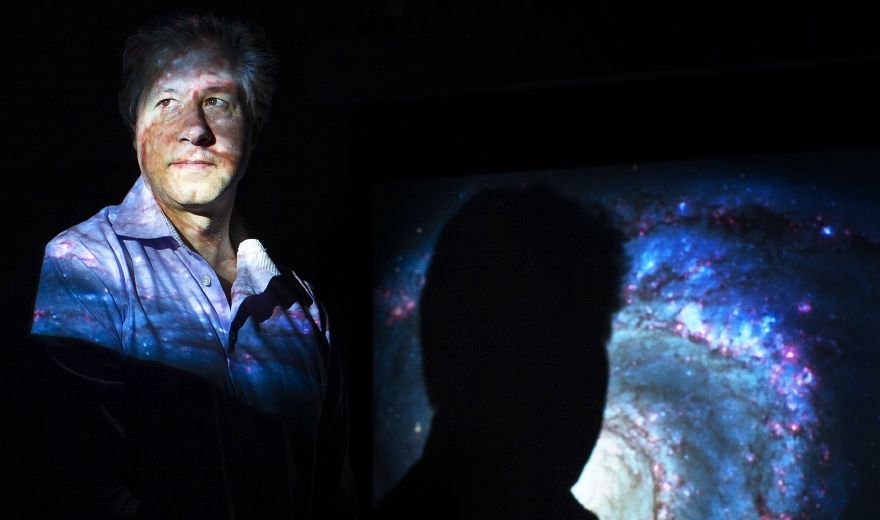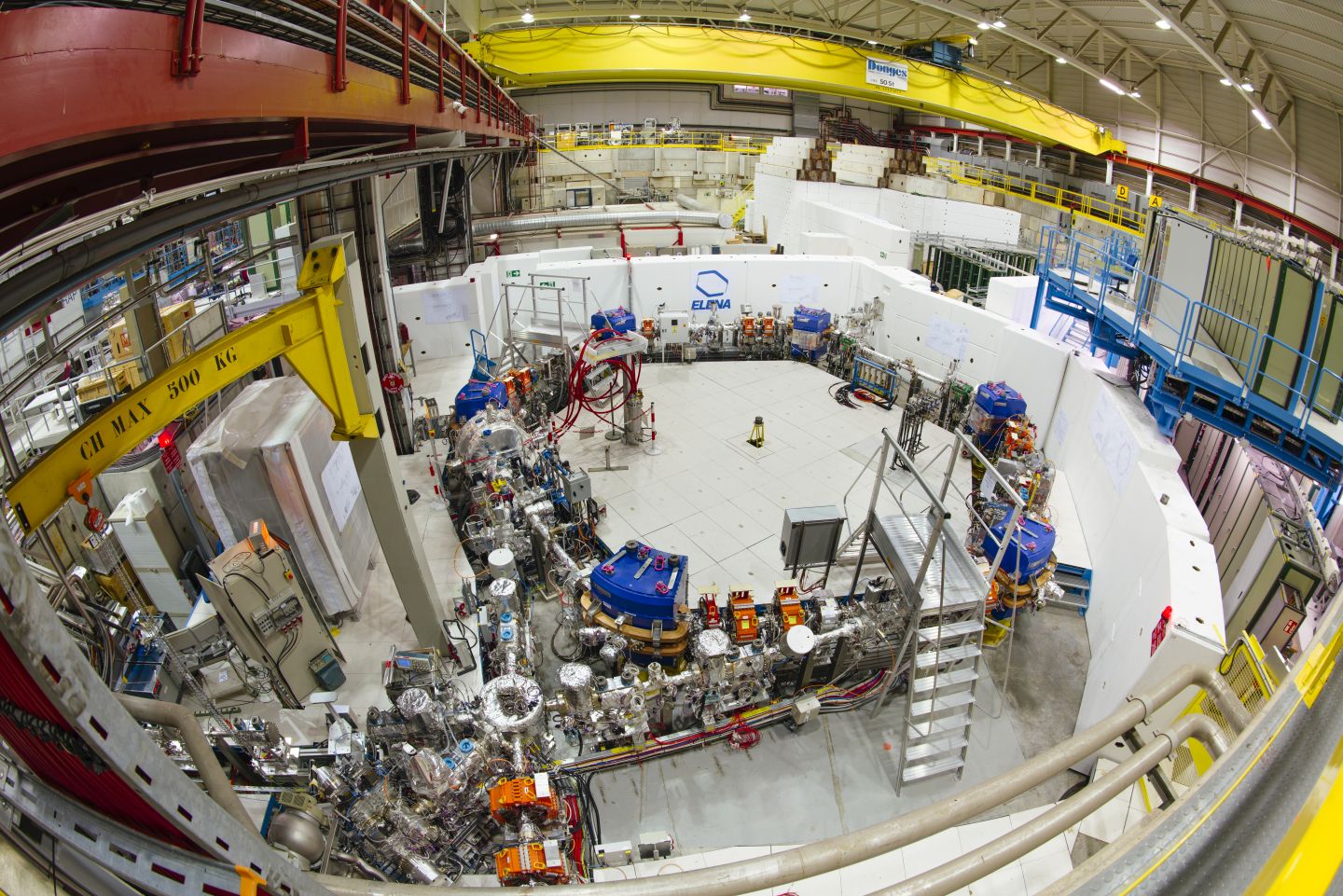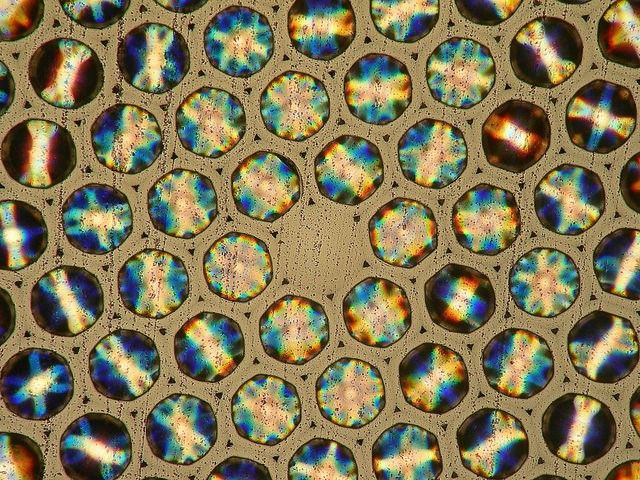Archive for the ‘particle physics’ category: Page 528
You could mistake ELENA for a miniature accelerator. But, unlike most accelerators, it’s housed in a hangar and you can take it all in in just a single glance. The biggest difference though, is that it doesn’t accelerate particles, but decelerates them.
CERN’s brand-new machine measures just 30 metres in circumference and has just begun its first tests with beam.
The ELENA (Extra Low ENergy Antiproton) deceleration ring will be connected to the Antiproton Decelerator (AD), which has been in service since 2000. The AD is a unique facility that enables the study of antimatter.
Nov 28, 2016
NASA’s EMDrive And The Quantum Theory Of Pilot Waves
Posted by Karen Hurst in categories: particle physics, quantum physics, space travel
There has been a lot of digital ink spilled over the recent paper on the reactionless thrust device known as the EMDrive. While it’s clear that a working EM Drive would violate well established scientific theories, what isn’t clear is how such a violation might be resolved. Some have argued that the thrust could be an effect of Unruh radiation, but the authors of the new paper argue instead for a variation on quantum theory known as the pilot wave model.
One of the central features of quantum theory is its counter-intuitive behavior often called particle-wave duality. Depending on the situation, quantum objects can have characteristics of a wave or characteristics of a particle. This is due to the inherent limitations on what we can know about quanta. In the usual Copenhagen interpretation of quantum theory, an object is defined by its wavefunction. The wavefunction describes the probability of finding a particle in a particular location. The object is in an indefinite, probabilistic state described by the wavefunction until it is observed. When it is observed, the wavefunction collapses, and the object becomes a definite particle with a definite location.
While the Copenhagen interpretation is not the best way to visualize quantum objects it captures the basic idea that quanta are local, but can be in an indefinite state. This differs from the classical objects (such as Newtonian theory) where things are both local and definite. We can know, for example, where a baseball is and what it is doing at any given time.
Continue reading “NASA’s EMDrive And The Quantum Theory Of Pilot Waves” »
Nov 28, 2016
Scientists have demonstrated a unique phase of matter
Posted by Shane Hinshaw in categories: particle physics, quantum physics
In experiments with magnetic atoms conducted at extremely low temperatures, scientists have demonstrated a unique phase of matter: the atoms form a new type of quantum liquid or quantum droplet state. These so called quantum droplets may preserve their form in absence of external confinement because of quantum effects. The joint team of experimental physicists from Innsbruck and theoretical physicists from Hannover report on their findings in the journal Physical Review X.$$!ad_code_content_spilt_video_ad!$$” Our Quantum droplets are in the gas phase but they still drop like a rock,” explains experimental physicist Francesca Ferlaino when talking about the fascinating experiment. In the laboratory, her team observed how macrodroplets formed in a quantum gas.
Nov 27, 2016
CERN introduces Large Hadron Collider’s robotic inspectors
Posted by Carse Peel in categories: particle physics, robotics/AI, transportation
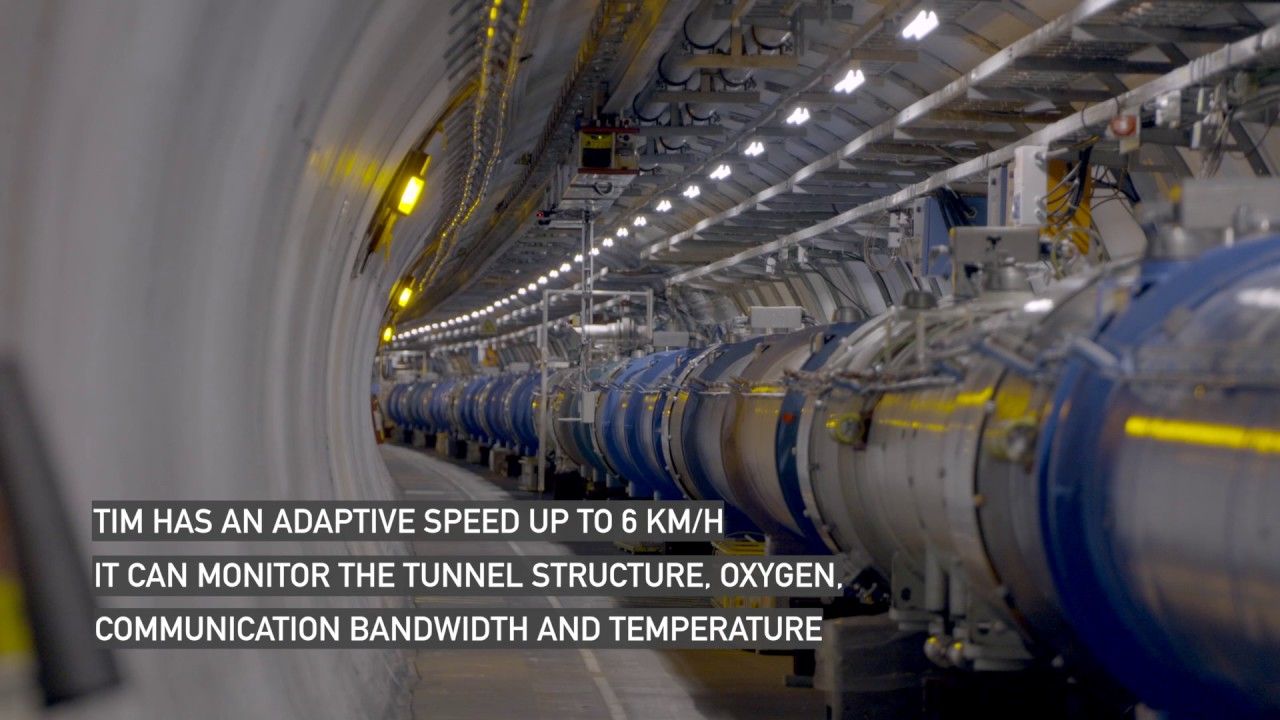
Since the Large Hadron Collider (LHC) needs to be in tip-top shape to discover new particles, it has two inspectors making sure everything’s in working order. The two of them are called TIM, short not for Timothy, but for Train Inspection Monorail. These mini autonomous monorails that keep an eye on the world’s largest particle collider follow a pre-defined route and get around using tracks suspended from the ceiling. According to CERN’s post introducing the machines, the tracks are remnants from the time the tunnel housed the Large Electron Positron instead of the LHC. The LEP’s monorail was bigger, but not quite as high-tech: it was mainly used to transport materials and workers.
As for what the machines can do, the answer is “quite a few.” They can monitor the tunnel’s structure, oxygen percentage, temperature and communication bandwidth in real time. Both TIMs can also take visual and infrared images, as well as pull small wagons behind them if needed. You can watch them in action below — as you can see, they’re not much to look at with their boxy silver appearance. But without them, it’ll be tough monitoring a massive circular tunnel with a 17-mile circumference.
Continue reading “CERN introduces Large Hadron Collider’s robotic inspectors” »
Nov 27, 2016
5 Deviant Particles That Could Spark a Revolution in Physics
Posted by Carse Peel in category: particle physics
Forget the LHC – from squished electrons to self-destructing protons, careful scrutiny of everyday particles acting strangely may refresh our picture of reality.
By Lisa Grossman
FOR a few heady months last year, the door to an unknown world was nudged ajar. An anomaly in data from the Large Hadron Collider, based at CERN near Geneva, Switzerland, indicated the presence of a peculiar new particle, a visitor so unexpected that it promised to transform our picture of how nature works. Then, with more data, the anomaly disappeared. The door creaked shut again.
Continue reading “5 Deviant Particles That Could Spark a Revolution in Physics” »
Nov 25, 2016
NA64 hunts the mysterious dark photon
Posted by Andreas Matt in categories: cosmology, particle physics
One of the biggest puzzles in physics is that eighty-five percent of the matter in our universe is “dark”: it does not interact with the photons of the conventional electromagnetic force and is therefore invisible to our eyes and telescopes. Although the composition and origin of dark matter are a mystery, we know it exists because astronomers observe its gravitational pull on ordinary visible matter such as stars and galaxies.
Some theories suggest that, in addition to gravity, dark matter particles could interact with visible matter through a new force, which has so far escaped detection. Just as the electromagnetic force is carried by the photon, this dark force is thought to be transmitted by a particle called “dark” photon which is predicted to act as a mediator between visible and dark matter.
“To use a metaphor, an otherwise impossible dialogue between two people not speaking the same language (visible and dark matter) can be enabled by a mediator (the dark photon), who understands one language and speaks the other one,” explains Sergei Gninenko, spokesperson for the NA64 collaboration.
Nov 24, 2016
New quantum states for better quantum memories
Posted by Karen Hurst in categories: computing, particle physics, quantum physics
How can quantum information be stored as long as possible? An important step forward in the development of quantum memories has been achieved by a research team of TU Wien.
Conventional memories used in today’s computers only differentiate between the bit values 0 and 1. In quantum physics, however, arbitrary superpositions of these two states are possible. Most of the ideas for new quantum technology devices rely on this “Superposition Principle.” One of the main challenges in using such states is that they are usually short-lived. Only for a short period of time can information be read out of quantum memories reliably, after that it is irrecoverable.
A research team at TU Wien has now taken an important step forward in the development of new quantum storage concepts. In cooperation with the Japanese telecommunication giant NTT, the Viennese researchers lead by Johannes Majer are working on quantum memories based on nitrogen atoms and microwaves. The nitrogen atoms have slightly different properties, which quickly leads to the loss of the quantum state. By specifically changing a small portion of the atoms, one can bring the remaining atoms into a new quantum state, with a lifetime enhancement of more than a factor of ten. These results have now been published in the journal “Nature Photonics.”
Nov 24, 2016
More reliable way to produce single photons
Posted by Karen Hurst in categories: computing, particle physics, quantum physics
Physicists at the University of Bath have developed a technique to more reliably produce single photons that can be imprinted with quantum information.
The invention will benefit a variety of processes which rely on photons to carry quantum information, such as quantum computing, secure quantum communication and precision measurements at low light levels.
Photons, particles of light, can be imprinted with information to be used for things like carrying out calculations and transmitting messages. To do this you need to create individual photons, which is a complicated and difficult process.
Nov 23, 2016
Qubits in brain can make it a quantum computer?
Posted by Karen Hurst in categories: biological, computing, neuroscience, particle physics, quantum physics
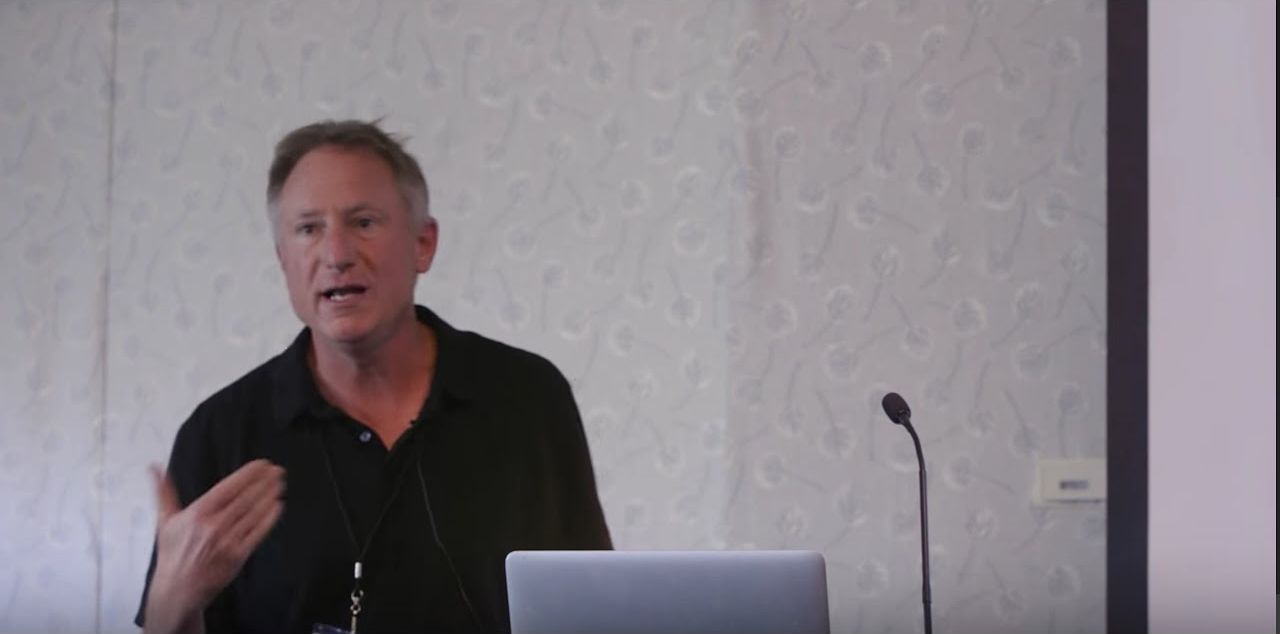
The mere mention of “quantum consciousness” makes most physicists cringe, as the phrase seems to evoke the vague, insipid musings of a New Age guru. But if a new hypothesis proves to be correct, quantum effects might indeed play some role in human cognition. Matthew Fisher, a physicist at the University of California, Santa Barbara, raised eyebrows late last year when he published a paper in Annals of Physics proposing that the nuclear spins of phosphorus atoms could serve as rudimentary “qubits” in the brain — which would essentially enable the brain to function like a quantum computer.
Isher’s hypothesis faces the same daunting obstacle that has plagued microtubules: a phenomenon called quantum decoherence. To build an operating quantum computer, you need to connect qubits — quantum bits of information — in a process called entanglement. But entangled qubits exist in a fragile state. They must be carefully shielded from any noise in the surrounding environment. Just one photon bumping into your qubit would be enough to make the entire system “decohere,” destroying the entanglement and wiping out the quantum properties of the system. It’s challenging enough to do quantum processing in a carefully controlled laboratory environment, never mind the warm, wet, complicated mess that is human biology, where maintaining coherence for sufficiently long periods of time is well nigh impossible.
Continue reading “Qubits in brain can make it a quantum computer?” »
